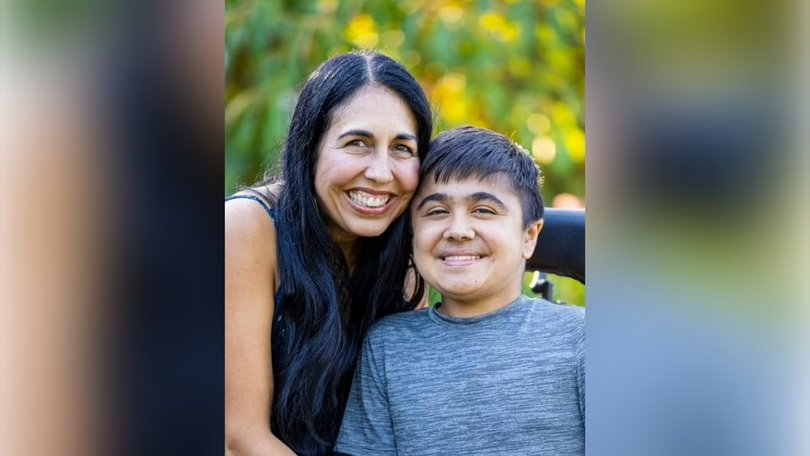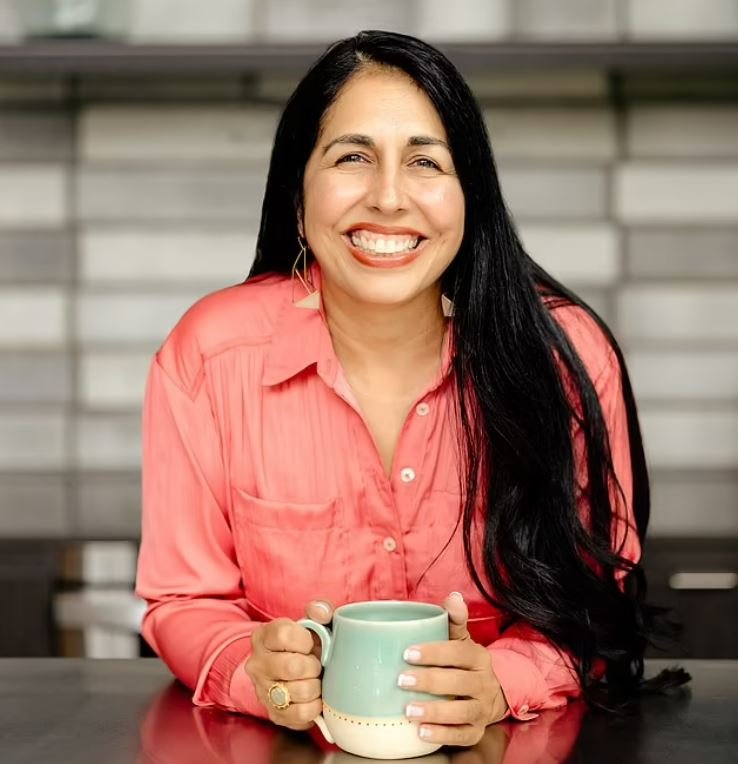TANMEET SETHI: My child is dying and there’s no way to change that. Here’s how I learnt to still feel joy

Imagine your life-changing in a tragic instant, your worst nightmare becoming a reality. The sudden loss of someone you love or a diagnosis that spells a new fate. Your life splits in two, time-stamped ‘before’ and ‘after’. Could you ever feel joy again?
I’m here to tell you, as a doctor who has cared for thousands of people suffering deep emotional wounds, that it is possible. I know because the nightmare is also happening to me.
I was 35 years old, nine months pregnant with my third child, and feeling on top of the world — doing meaningful work as a doctor; married to a loving husband — when my dreams were shattered.
Sign up to The Nightly's newsletters.
Get the first look at the digital newspaper, curated daily stories and breaking headlines delivered to your inbox.
By continuing you agree to our Terms and Privacy Policy.On an otherwise sunny September day, my second child, Zubin, not yet three years old, was handed a death sentence: Duchenne Muscular Dystrophy (DMD), a degenerative and 100 per cent fatal neuromuscular condition that affects young boys.
Boys with DMD lose their ability to walk until eventually their lungs and hearts fail in their late teens or early 20s.
I will always remember that life-changing phone call, the one that plunged my life into the ‘after’ zone. I was at my clinic, well into my day, when my husband Steve, 42 at the time, uttered in a quivering voice: “Come home… now.’ Steve is usually an ocean of calm in an emergency. His job as an anaesthesiologist demands it. So when he trembles, you know something has already gone very wrong.
We spent that afternoon sitting out on our porch swing, swaying back and forth in utter disbelief, our hearts in our feet. “Why me? Why us? Why Zubin? How could this be happening?”
My body felt heavy, drained of all energy. “Please let this be a mistake.” All I wanted was for the pain to stop. Avoiding pain is how we survive. And yet there was something absurd about those “why me? why us?” questions. Tragedy is not doled out based on your worth as a human being. It’s the same for all of us – if you live and love, you will hurt. I can’t remember which one of us said it first, whether it was me or Steve, but as we sat there in the depths of our misery, one of us quietly asked: “Why not me? Why not us?”

Of course, if it’s caused wilfully by other people, some forms of suffering are truly unjust. But there are also many moments of tragedy that can’t be explained rationally, like the one that was enfolding us. None of it is ever fair. By starting to ask, “Why not me?”, we acknowledged our connection to the entire sea of humanity. We were not alone.
This was the first critical step. The days and months ahead were dark and frightening as we envisioned the inevitable decline of Zubin. Parents aren’t supposed to watch their children die.
What would it mean for Sahaj, his four-year-old brother and our unborn daughter, who had no idea what grief awaited her? I felt angry at the universe; her birth should be pure joy, and now it would be clouded by this tragedy.
When she arrived one month later, we named her Neha, meaning ‘love’. She kept our hearts open at a time when we wanted to shut down.
Steve and I went through the motions of going to work, caring for patients, tending to our children. One day I was driving in a downpour and crying so hard that I could not tell if my blurred vision was from my tears or the rain on the windscreen.
I pulled over to call my friend and mentor Debbie, a wise clinical psychologist. She understood suffering well through her work and had experienced countless tragedies in her own family. I was desperate for some wisdom to soothe this pain. But instead, I got another question, one that absolutely infuriated me. ‘You don’t like to be sad, do you, Tanmeet?’ she said.
It felt like a punch in the face. I could barely breathe long enough to make a phone call – what on earth was she saying? Of course, I didn’t like being sad, that’s why I was asking for help.
I never forgot her question, though. It was a reminder that I, like every human on this planet, will resist any challenging emotion that makes me uncomfortable. Pain feels like a danger to your brain, and it triggers a desire to run away in order to survive. Debbie was simply reminding me that a quick fix was not possible. I needed to feel the sadness, the pain, first, if I wanted to also feel joy again.
That was 16 years ago – today Zubin is 19. He stopped walking and started to use a wheelchair at the age of 12 and his brutal fate continues to become more of a reality as his heart weakens. We are fortunate that he is surrounded by an inclusive and loving school community and he has such a joyful spirit.
He is sad he can’t walk any longer but it seems the more his body breaks down, the stronger his spirit gets. This year, he was thrilled to attend his high school graduation and prom. He has a love for music and theatre and feels joy playing piano and drums to the best of his physical ability and acting in the school plays.
The life we’re living isn’t the one I wanted to have, no, but it’s the one unfolding whether I like it or not. There is no going back to the ‘before’. I am permanently in the ‘after’, where grief is an ongoing reality for us.
And yet living in this reality has taught me a radical, almost revolutionary, truth.
It is only by fully feeling the hard, sometimes shattering, emotions of the ‘after’ zone that you allow the emergence of something else: profound joy. When you shut down to the pain, you withdraw from life and limit your capacity to feel everything else as well.
The fact is, before Zubin’s diagnosis, I was confused about happiness and joy. My happiness was always dependent on something happening – whether I got into medical school, whether I got pregnant when I wanted to, or got this job or that house. It was always about an outcome, and my mood was then attached to that.
But of course in this situation with Zubin, there can be no happy outcome. My child is dying and there is no way to change that.
Yet joy, I have discovered, is different from happiness. It emerges from the same deep well in your body as pain, the same well that contains your capacity for love, meaning and connection. If you numb your pain, you then also numb your capacity for that full continuum of emotions. Joy and pain float together in the same river.
Unlike happiness, you can feel joy and pain in the same instant. Imagine being at a funeral where you are grieving. You feel the ache of your heart and at the same moment, you can connect with a friend about the way your loved one made you laugh or irritated you.
Or in my case, I raise money for DMD research through the foundation we established. I feel the pain of why I do that work, because of my potent desire for a cure for my son. But at the same time, I feel my heart open in gratitude for those who extend their time and resources to support this cause, even though their sons are not affected. I feel pain while feeling the power of love and connection.
I’m not saying to look on the bright side with contrived positivity. I was livid every time someone said to me, “At least you have two other healthy children”. Whenever someone urged me to be ‘happy’ despite my real pain, what I really felt was hopeless.
Instead, by turning towards my pain, by naming it and owning it, I could understand its depths better. Suffering strips you of your capacity to find meaning in life — what could possibly be the ‘meaning’ of Zubin’s decline?

Being told your son is dying shatters every meaningful dream of parenting a child. But when I accepted this was our reality, I started to make dreams far bigger than any I had conceived before. It wasn’t longer the standard dream about what college he would go to or who he would marry. But instead, I dream for him to have ease, to be surrounded by love, and to live the fullest life possible. And now I have those dreams for all my children.
By becoming more comfortable with my pain, I am able to sit with others in pain more easily. I can connect more deeply with my patients going through loss and feel the depths of their pain more acutely without it feeling exhausting. And I actively seek out moments that give me joy, like dancing.
At my 50th birthday party two years ago, I danced for hours to Bollywood music with Steve and all three of my children. I remember closing my eyes, tearing up, and feeling such a strong river of joy in my body.
I told myself ‘Bottle this feeling, Tanmeet. This joy is healing medicine and always here for you.’
Neuroscience agrees with me. When you move with others in synch to the same harmonic vibration, you flood your system with neurochemicals of joy and connection, serotonin, dopamine and oxytocin. You not only feel good, but you want to reach out and connect with others more deeply. You feel more human, more alive.
And on the days when I am feeling less joyous, I am gentle with myself because I know not only is it normal to feel pain, but it means I am fully human.
By feeling the full continuum of my emotions, I reclaim my humanity and my joy. Feeling this deep joy allows me to honestly say my life is perfect, not despite Zubin, but because of him.
You can reclaim joy, even if the worst has happened. Here are five strategies I use to help me:
1. Flip the question of ‘Why me?’ to ‘Why not me?’
It’s normal to wish what’s happening to you wasn’t. Do not deny those thoughts. Instead, follow them with a ‘Why not me?’. Or simply confirm back to yourself ‘This is happening’. This is not to negate your feelings but to soften your resistance to them. Acceptance is one of the first ways you can turn back towards your pain and reclaim your full humanity and power.
2. Try ‘emotion labelling’
It is not always practical to feel everything in the moment each emotion arises – you might be in the middle of a work day, for example – so it’s natural to try to suppress your feelings. But this can activate your sympathetic (fight or flight) nervous system, which only keeps us more agitated and stressed. Naming the emotions can dampen the amygdala (the brain’s fear centre) and allow us to feel more calm. If I suddenly feel a burst of emotion but am not in a place where it’s possible to fully process it, I picture each feeling in a bubble gently floating in the air. Fear. Sadness. Anger. The bubbles sometimes get bigger or smaller or melt into each other, but I have no attachment to them. I notice them and label them, which helps to diminish their power.
3. Talk to yourself kindly
When your harsh inner voice says you should be over this already, meet it with a loving voice. Remember that you are experiencing what all humans do: deep pain. Self-compassion tells our brain that we are safe. Alternatively, simply put your hand on your heart and think of how you would hold or speak to someone you love who is suffering and offer those same words to yourself.
4. Release your ‘hope molecules’
Move your body, often. Take a walk, sway to music, roll in your wheelchair, dance, shake… find a way that feels good. Each time you move your muscles, even in small ways, your body secretes myokines, anti-inflammatory chemicals that scientists have dubbed ‘hope molecules’, that help our brain cells thrive and improve learning and mood. Stress hormones are also decreased if you move with others, or to music and in nature.
5. Try ‘gratitude recasting’
Gratitude is an underestimated power tool that increases neurochemicals that help us feel better. MRI scans show that when you practise gratitude, you light up the same centres of your brain as when someone you love holds your hand during a painful moment. Start by finding one thing each day you are grateful for. Or go one step further and try ‘gratitude recasting’: appreciate the ways you have grown or changed through painful experiences. This activates the parts of your brain that assign new meaning to your experiences. Ask yourself how an event has helped you grow as a person, put your life in perspective, or face other challenges.
Originally published on Daily Mail
